Ruby Salt Bush
$6.59
Enchylaena Tormentosa
- Seed Count 25
- Edible berries with a salty, sweet flavour
- Tolerant of poor soils and drought
In stock
Description
Ruby Salt Bush is a low-growing perennial shrub native to Australia’s arid and semi-arid regions. This species is renowned for its adaptability to extreme environmental conditions, including drought, salinity, and nutrient-poor soils. Its distribution includes coastal dunes, inland plains, and rocky outcrops, making it a useful candidate for landscape restoration, sustainable landscaping, and water-wise gardens.
Mature Ruby Salt Bush plants typically reach 0.3 – 1 metre in height and spread up to 1.5 metres across. The foliage consists of small succulent, cylindrical leaves covered in fine, silvery-white hairs, which reduce water loss and reflect the harsh sunlight. From spring to autumn, the plant produces inconspicuous greenish-yellow flowers. The flowers are followed by fleshy, berry-like fruits that start out yellow, becoming orange at mid-maturity, and finishing deep ruby-red when fully ripe. The berries persist for months, providing long-lasting visual interest.
Ruby Salt Bush is a keystone species in arid ecosystems. Its deep, fibrous root system stabilise loose soils, preventing erosion in wind-prone or degraded landscapes. The plant’s berries are a critical food source for native fauna, including zebra finches, parrots, and honeyeaters, while its dense, low-growing form offers shelter for invertebrates and small reptiles. In coastal environments, it tolerates saline soils and salt spray, making it a practical choice for dunes or gardens near the ocean.
In garden settings, it serves as a groundcover on slopes, a border plant in native gardens, or a textural contrast in rockeries. The silvery foliage complements flowering species like the Swan River Daisy or Eremophila, while the berries add seasonal colour when other plants may be dormant. In the farming world, it is used in pasture systems for livestock forage during periods of drought.
Historically, Indigenous Australian communities consumed them fresh or dried as a seasonal food source. The edible berries, which are rich in antioxidants, have a unique tangy flavor and can be incorporated into jams, sauces, and other culinary creations. They are also a source of essential nutrients in arid regions where fresh produce may be scarce. The plant’s leaves and stems are not typically consumed but have been documented for use in traditional medicinal practices.
Seed Preparation
Pretreatment:
- Smoke treatment significantly improves germination.
- Soak seeds in smoke water for 24 hours or apply smoked vermiculite to the sowing medium.
Optimal Sowing Time
Temperate regions:
- Sow in spring or early summer, September to December, when temperatures range between 18 – 30°C.
Arid zones:
- Sow in winter, May to July, to leverage cooler, moist conditions.
Planting Medium
Soil mix:
- Use a well drained medium, such as a blend of sandy soil, perlite, and compost.
- Avoid heavy clay or waterlogged soils.
Sowing Method
Sowing depth:
- Plant seeds 3–4 mm deep in pots or seed trays.
- Lightly cover with soil or sand.
Watering:
- Mist gently to keep the medium moist but not soggy.
- Overwatering can rot seeds.
Environment:
- Place in a warm, shaded area, such as under 50% shade cloth or dappled tree coverage, until germination, which typically occurs in 2–4 weeks.
Germination and Early Care
Temperature:
- Maintain 18–30°C for optimal germination.
- Use a heat mat, if necessary, in cooler climates.
Patience:
- Some seeds may remain dormant for months.
- Avoid discarding trays prematurely.
Transplanting:
- Once seedlings develop 2–3 true leaves, transplant into individual pots or a prepared garden bed.
Site Selection and Soil Requirements
Sunlight:
- Full sun is ideal for vigorous growth and berry production.
- Partial shade is tolerated but may reduce fruiting.
Soil type:
- Adapts to sandy, loamy, or saline soils.
- Ensure excellent drainage to prevent root rot.
pH tolerance: Thrives in acidic, neutral, or alkaline soils.
Watering and Fertilisation
Watering:
- Water seedlings regularly until established. Around 6 months.
- Mature plants are drought tolerant and require minimal watering.
Fertiliser:
- Avoid heavy feeding.
- A slow release, low phosphorus fertiliser can be applied sparingly in poor soils.
Long Term Care and Maintenance
Pruning:
- Lightly prune after fruiting to maintain shape and encourage bushier growth.
Frost tolerance:
- Mature plants withstand temperatures as low as 6°C.
Pests and diseases:
- Generally pest resistant.
- Monitor for aphids or scale insects and treat with ecofriendly solutions if needed .
Harvesting
- Harvest berries when fruits turn bright red or orange.
- Eat fresh, soak for a sweet drink, or dry for later use.
Postage Charge
Orders under $30 attract a $4.95 shipping charge. Orders $30 and above have free shipping.
Order Times
Seed orders are normally dispatched within three business days. You will receive an email when seeds are mailed out.
Postage Days
Seeds are mailed out Monday to Friday at 1pm. Except for the Friday of long weekends.
Postage Times
WA 2-3 Days: SA,NT 3-5 Days: NSW, ACT, QLD, VIC: 5-7 Days
Carrier
We use Australia Post Letter Postage for the majority of orders
Not only are our seeds packed in recycled paper envelopes, we keep the theme going when we post out website orders. To protect your seeds from moisture and the letter box munchers (snails), we use a very special plastic free material made from plants. They are then put into recycled mailing envelopes. Green all the way 💚🌿

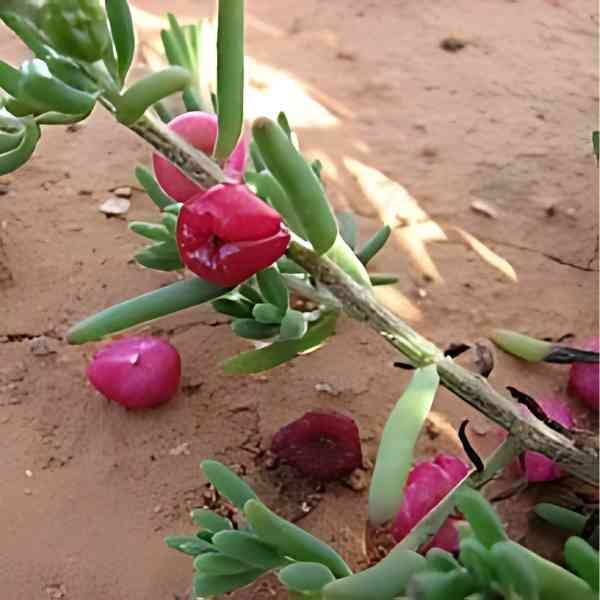





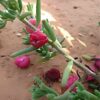
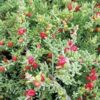
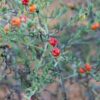

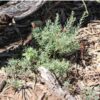
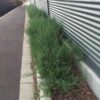


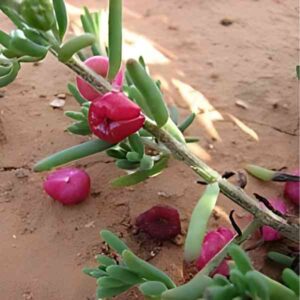
1 review for Ruby Salt Bush